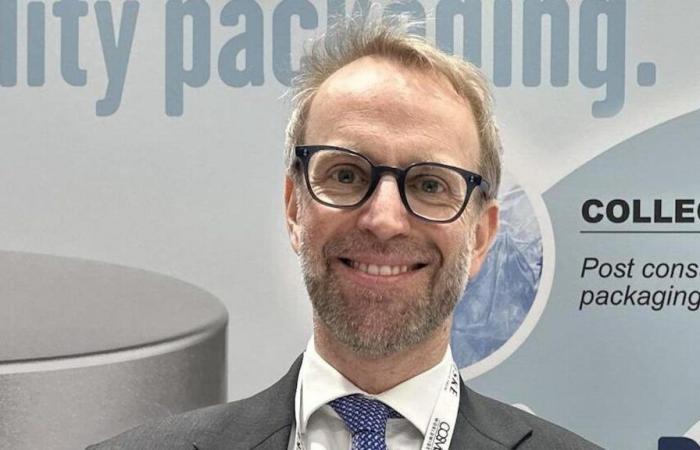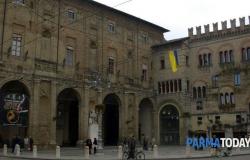For Carlo Andriolo, 51 years old, from Pordenone, the new general director of AcegasApsAmga, his return to the multi-utility of the Hera group is a return. After several years of consultancy in the world of telecommunications, Andriolo was in fact the top manager who eleven years ago, as program manager and CFO, oversaw the direction of the integration of the various operating companies in Padua, Trieste with Acegas and the following year Udine and Gorizia from which AcegasApsAmga was born. In 2017 Andriolo became CEO of Aliplast, the North Eastern company bought in the meantime by Hera which deals with the recycling and transformation of plastic polymers and today has 200 employees and a turnover of 400 million. Now the return to Padua and Trieste: «I will divide myself between the two cities».
Andriolo, with what ambitions do you return to the helm of AcegasApsAmga?
«We are a group that wants to play a very important role in the territories in the name of environmental sustainability and the circular economy. To make the energy transition it is necessary to integrate the different businesses and our group, as a multi-utility, can provide composite and complete responses, developing synergistic solutions between the different services: environmental, water, gas and energy networks, public lighting and energy redevelopments. We then want to strengthen intelligent waste collection and treatment services in the areas of Veneto and Friuli Venezia Giulia. These are innovative and brilliant projects that must necessarily be completed by 2026.”
More alternative energy sources?
«The needs of communities and European regulations are pushing towards decarbonisation. To achieve it, new development visions for cities are needed. We need to focus on a “resilient” electricity grid in the North East capable of responding to a sharp increase in consumption also by focusing on photovoltaics and alternative energies such as hydrogen. We are using artificial intelligence in various areas, including with a vast plan to replace meters with new digital devices to monitor bills and consumption in real time and reduce losses from the water network. In short, the era of the meter reader in homes is coming to an end.”
Are you focusing on artificial intelligence?
«Investments in AI are fundamental because they allow us to prevent network overloads. Electricity flows like water and therefore we need to expand the capacity of energy passing stations. We must synchronize production with the demand for electricity consumption in the area by strengthening the photovoltaic network. And then there is the great challenge of smart grids, a set of “intelligent” electricity distribution networks that are fundamental for maintaining the balance of the network and preventing overloads. The smart grid will be fully operational in the port of Trieste in a couple of years.”
Moving on to the users, do you have a plan to replace the meters with new digital ones?
«The replacement of water meters has just begun as part of a plan in the North East against water losses financed by the Pnrr: in total between Padua (which only has the water and waste service) and Trieste, 51 thousand will be replaced. As regards electricity, however, 161 thousand must be replaced: of these we have already replaced 24 thousand in Gorizia and 67,500 in Trieste where we have already replaced 90% of the 128,700 gas meters planned”.
You are a partner of the North Adriatic Hydrogen Valley for the construction of a hydrogen production plant. Where are we at?
«This initiative concerns 17 pilot projects to be developed in partner countries (Italy, Slovenia and Croatia). In Trieste we will build a 2.5 megawatt photovoltaic plant by 2025, next to the waste-to-energy plant, which will produce 370 tonnes of green hydrogen per year for local public transport and the industrial sector. It will be the first plant of this type in the region and will guarantee replacement gas production just a stone’s throw from us.”
The recent emergency in Capri demonstrates that the water network, due to climate change, can become an emergency. How are you moving?
«We need to be able to deal with the impact of climate change by increasing the resilience of networks, thanks also to artificial intelligence, and reducing water losses in aqueducts. In Fvg Hera participates together with a network of managers in the Smart Water Management project, with the aim of reducing network losses in aqueduct systems by 13%. Other investments will serve to reduce losses by 35% in the aqueduct systems in the areas of Padua and Vicenza”.
What is the timing of this vast energy reconversion plan by AcegasApsAmga?
«The European Green Deal has set the objective of climate neutrality by 2050 with the reduction of emissions and decarbonisation. Of the 200 million Pnrr funds for the energy transition, around sixty will be spent in the North East. As mentioned, among the projects in the field is the electrification of the docks of the port of Trieste, the so-called cold ironing, foreseen by a European directive to reduce dependence on oil and reduce the environmental impact in the transport sector”.
The ships consume like real floating cities…
«For this reason, it is a question of connecting large ships to the electricity grid with connectors during the mooring phase, so as to reduce the use of auxiliary engines on board to a minimum and significantly reduce emissions of CO2, nitrogen oxides and fine dust, as well as the acoustic impact. An environmental aspect of crucial importance for large port cities such as Trieste. We will give more electricity and we will give more by increasing the use of renewable sources.”
Is it possible to quantify the demand for energy from private individuals, industry and the presence of large ships?
“For Trieste it will be a great challenge and we are working with all stakeholders to achieve the goal of supplying the network. According to estimates, also considering the National Integrated Energy and Climate Plan, we expect that the city’s consumption, also due to the presence of large cruise ships, will increase by 10-15% by 2030. With the modernization of the network we will be able to provide connected users with approximately 190 megawatts more than today, effectively increasing the offer tenfold”.
And for the modernization of the Old Port? Here too it is a second city to be supplied with energy..
«Here we are talking about a vast area to be urbanized with infrastructure, water, public lighting, gas, energy. We must be versatile in imagining its future and we are working together with the Municipality. To understand the development of the Porto Vecchio in 20 years, a digital twin has been created which becomes a fundamental work tool. A basis on which it will also be possible to apply elements of artificial intelligence to simulate water and energy consumption.”






